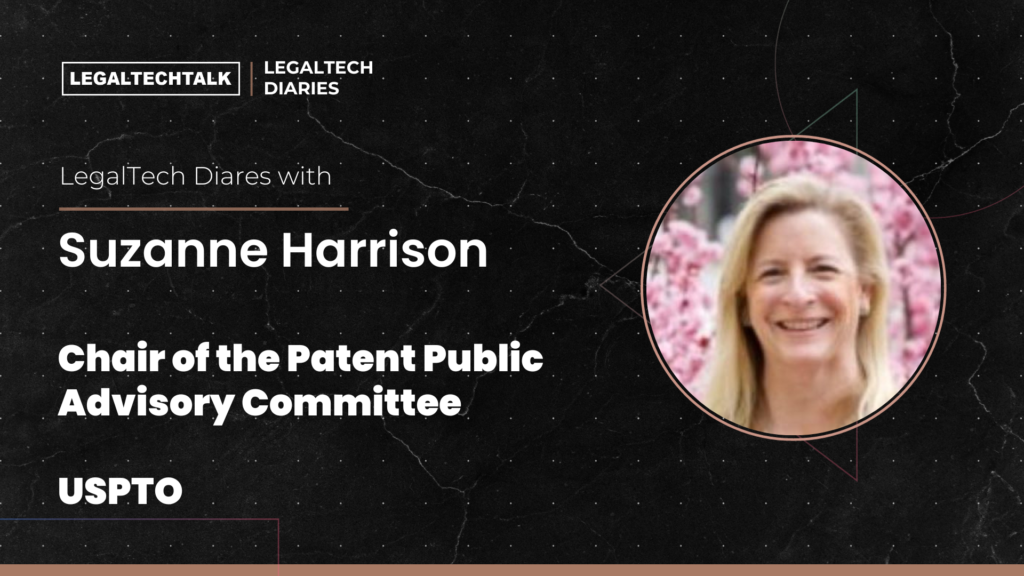In this interview, Suzanne Harrison and Bradley Collins discuss current IP trends. Suzanne highlights the impact of AI on industries, emphasizing the need for understanding tools, contractual obligations, and IP risks. She also stresses the importance of IP risk reduction and measurable goals for smarter business decisions. The conversation concludes with Suzanne cautioning about the risks associated with the politicization of patents and geopolitical challenges in critical technology areas. The interview provides concise insights for both IP leaders and non-IP executives.
Bradley Collins: Hi Suzanne, will kick things off with a pretty broad question – what are the latest IP trends that non-IP leaders should be well aware of?
Suzanne Harrison: Thanks Bradley. There are a few trends that Executives should keep an eye on:
Artificial Intelligence – AI will likely upend industry, including IP, over the next few years. For corporations, AI tools are already being used (or created) by their R&D folks. So companies need to understand the following:
- what tools are being utilized/created, and for what
purposes? - what are the contract and data obligations around
using/creating the AI tools? - are there any IP ramifications, e.g. possible IP protection
of the tool itself and the outputs as well as IP risks
relating to the training data and outputs? - does the company have an AI policy, and if so, are they
currently in compliance with the policy?
IP Risk Reduction – Most executives already understand how IP can be used for value generation. However, fewer understand the amount and types of IP risk. Describing how IP risk presents itself, how to quantify it, and ultimately how to ameliorate it are valuable skills that executives need to have.
Providing an ROI for IP – Your IP team should be able to clearly and articulately explain how the different IP portfolios provide either value or risk reduction to the business and should also be able to provide an ROI. If they cannot, then why is the business paying so much money.
“The fact that there is no positive narrative about IP, and patents in particular, is not new news. However, the positioning of patents as causing high drug prices, vaccine prices, and seedcrop prices is dangerous rhetoric”
Bradley Collins: Interesting stuff. You mentioned when we last spoke ways corporates can use IP to make smarter business decisions, please can you elaborate on that?
Suzanne Harrison: There are several ways that corporations can use IP to make smarter business decisions:
First, the company should be explicit about what types of value they want to get out of the portfolio. Is it revenue generation, risk reduction, price premium, strategic positioning, brand awareness, or something else? Companies generally choose no more than 2-3 types of value they want to achieve from the portfolio, and whatever they choose should be aligned with the overall corporate strategy and objectives.
Second, whatever, they choose should be something that they can measure. For example, “we want to be the leading innovator in X technology”. How are you going to measure success? By patent filings, publications, new product introduction, or some other metric? Your R&D employees should know what values the company is seeking from IP so that when they solve a problem and invent something, the patent claims (for example) can be focused with those end values in mind.
Finally, patent data can provide additional insights to company decision making that can be quite useful. For example, it may be possible to: predict competitor technology trajectories; inform R&D directions; visualize who is and is not participating in the inventorship ecosystem and identify unconscious decision bias in the company when checked against HR data.
Bradley Collins: Finally – what are the risks and dangers associated with the evolving IP world we find ourselves living in?
Suzanne Harrison: 1. Patents are now a political tool, but not necessarily in a partisan way. The fact that there is no positive narrative about IP—and patents in particular—is not new news. However, the positioning of patents as causing high drug prices, vaccine prices, and seed-crop prices is dangerous rhetoric. It can require companies operating in those industries to justify why they use IP and how it is not related to the product pricing. Rebutting this rhetoric requires person by person lobbying rather than party lobbying, because the issue is not necessarily partisan.
2. On the geopolitical front, nation states have now realized that IP, and patents specifically, can be used to help or hurt economic and/or technological competitiveness. From an IP perspective, companies should expect more meddling by nation states in standard essential patents (SEPs), global royalty rate setting, and international jurisdiction shopping. From a technology perspective, companies should expect increased CFIUS compliance demands, export controls, and possibly bifurcated markets. I do not foresee any solutions to any of these issues coming in the next year.
3. Finally, it your company is creating technologies and/or products in critical and emerging technology (CET) areas as either defined by the US or China, expect heightened levels of government scrutiny, espionage, and litigation. Adversarial nation states are using both legal and illegal means to gain access to these technologies and companies are caught in the crosshairs.
Read all 13 interviews with legal experts in our latest LegalTech Diaries Volume 3: https://www.legaltech-talk.com/legaltechdiaries/volume-3/
Suzanne will also be speaking at LegalTechTalk 2024 on 13-14th June 2024 at InterContinental O2 in London where over 2,500 in-house and law firm leaders, legaltech startups, and investors will join us for 2 full days of insights and networking. See more here: https://www.legaltech-talk.com/








